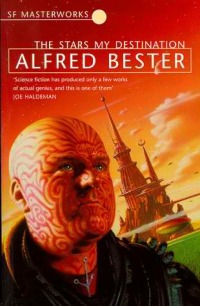The Unchangeable Spots of Leopards by Kristopher Jansma
 Wednesday, March 20, 2013 at 10:41AM
Wednesday, March 20, 2013 at 10:41AM 
Published by Viking on March 21, 2013
Whether The Unchangeable Spots of Leopards is a novel (as the title advertises) or ten connected short stories (plus versions of a preface and epilog) isn’t entirely clear -- the structure (each story has its own title and is complete within itself) and the changing names of the characters suggest the latter, while the unitary themes (and a wristwatch that appears in nearly every story) imply the former -- but I don’t think it matters. Kristopher Jansma plays with form in a way that reminds us he’s writing about creators of fiction, inventers who shape and reshape reality to suit their own ends.
Although Jansma pokes fun at the writer’s life and at literary criticism, his stories are serious dissections of recurring characters at various stages of their lives. The stories share the same narrator, a writer who rarely writes, and who has lost every book he’s ever written. The first story describes a seminal event in the narrator’s young life, one to which he often returns in subsequent stories, although a key detail eventually changes. What begins as a cornball tale of class-defying love becomes an insightful story about fleeting moments and the impact they make on our lives. The next four stories revolve around the narrator’s friendship with two other characters. The narrator meets Julian in Freshman English and they bond over their mutual love of writing. Julian eventually finds success that eludes the narrator. Julian’s friend, a beautiful girl who becomes a successful actress, also bonds with the narrator, although not in the way the narrator would like.
Jansma uses those friendships to explore the role of a writer. One story asks how much literal truth a writer should reveal in a work of fiction -- a vexing question that results from his decision to base a story upon his relationship with the actress. Another poses the flip side of that question: how does a writer, intent upon the creation of illusion, avoid hiding from the truth? One story, purportedly the only story the narrator managed to get published, casts the narrator as a character in his own fiction. The fifth story, in which the narrator contemplates ruining the actress’ wedding, asks whether he is motivated by love or by the desire to control her like a character in a story.
If the first five stories (collected under the subtitle “What Was Lost”) highlight the hope, promise, and angst of youth, the second five (subtitled “What Was Found”) display the down slope of life’s arc. The narrator is now a failed writer who has managed to find a job teaching at a second-rate university by assuming his more successful friend’s identity -- the latest in a series of lies the narrator tells about his name. The narrator’s approach to teaching journalism is to teach the art of writing fiction -- the art of lying. By arguing against the notion that art contains truth, he hopes to convince himself of the opposite. Yet whether the narrator is capable of discerning the difference between truth and fiction -- whether, in the end, there is a difference -- is one of the book's central questions.
The narrator moves from his teaching job to ghostwriting term papers to writing the unauthorized biography of his successful friend, all the while making faltering steps to write meaningful fiction of his own. His friend (Julian of the earlier stories becomes Jeffrey in the later ones) has disappeared (doing “a full-Salinger”) after producing a single novel, a work of genius that is both popular and critically acclaimed. As he explores his friend’s life, the narrator begins to wonder whether he is his friend’s doppelgänger, but the reader suspects that the friend is the narrator’s alter ego (or vice versa).
The narrator visits Africa and Iceland in stories eight and nine, but the last story takes place in Luxembourg, a country that excites no expectations and therefore deprives the characters of the pleasure of feeling let down. Perhaps that is a metaphor for the narrator’s life -- full of expectations and disappointment -- but it might be Luxembourg’s national motto that sums him up: “We wish to remain what we are.” For much of the book, the narrator is in motion, but he isn’t moving forward, while his friend is often moving in reverse. The last story asks whether that’s something they can change -- whether they can find themselves.
Viewed individually, Jansma’s stories are fun and insightful and occasionally brilliant. Viewed collectively, The Unchangeable Spots of Leopards has the heft of a serious novel, one that builds characters word by word until they become whole, then knocks them apart and rebuilds them -- as does life. It is one of the best fictional explorations of what it means to be a writer that I’ve encountered.
HIGHLY RECOMMENDED



